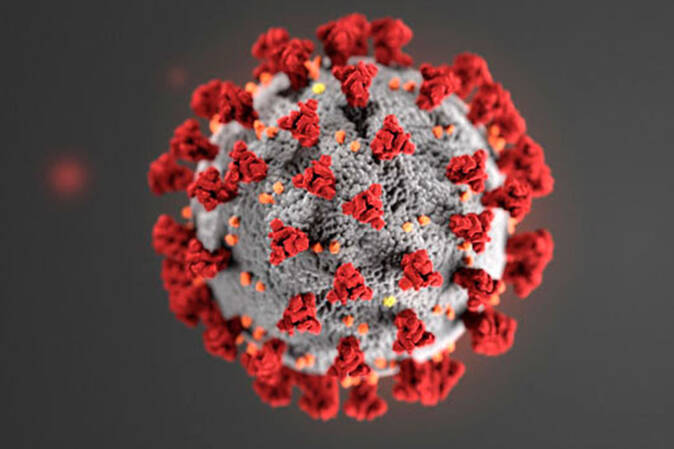State officials said during a press briefing Thursday that COVID-19 cases appear to be plateauing in Alaska, but that nearly every region is still reporting a lot of community spread.
Chief Medical Officer Dr. Anne Zink last week said the Department of Health and Social Services was “cautiously optimistic” after officials noticed cases looked like they hadn’t been increasing at the same rates, but said Thursday that she wishes the state was hitting a decline.
“When you look at the report date we’ve come up and we’re kind of plateauing here,” Zink said Thursday. “We are hoping to kind of see more of a downward trend, but it’s a little bit more of a flat trend across the state of Alaska and (we’re) so grateful that it’s not increasing, but we still have work to do to push those numbers down.”
The approved COVID vaccines, Zink said, are the best tool to get cases to drop off. Non-pharmaceutical intervention — including masking and social distancing — will also make a difference in the coming weeks.
“We can talk a lot about treatment and all sorts of other things, but our biggest tool is that primary (vaccine) series,” she said.
The Pfizer-BioNTech vaccine, now marketed as the Comirnaty, received full approval from the Food and Drug Administration for anyone 16 and older in August.
Pfizer is still available via emergency use authorization in accordance with FDA guidelines for kids 12 to 15 years old, and the Moderna and Johnson & Johnson/Janssen shots have an EUA for anyone 18 and older.
Additionally, the FDA approved a third dose of both the Pfizer and Moderna vaccines for emergency use in immunocompromised people in August.
And in September the FDA approved a booster dose for the Pfizer shot. They are available for anyone 65 years or older, anyone 18 and older living in long-term care facilities, anyone 18 and older with underlying health conditions and anyone 18 and older working in high-risk settings.
Moderna on Thursday received a recommendation from an FDA advisory panel for booster doses as well, but still waits on final approval from the Centers for Disease Control and Prevention.
Primary care providers can determine eligibility for an initial vaccine series, as well as immunocompromised third shots and booster doses.
Across Alaska, 59% of everyone 12 and up was fully vaccinated against COVID as of Thursday. Another 64.1% had received at least one shot.
The Kenai Peninsula Borough’s vaccination rate continues to lag behind many other regions.
As of Thursday, 49.4% of people 12 and older were fully vaccinated and another 53.4% had received at least one dose.
Zink said data continues to show more adverse side effects and long-term health complications from COVID itself than from the approved vaccines.
“Again, those 12 and above — the risk of COVID is much greater than the risk of vaccination,” she said.
Additionally, Zink reported that hospitalizations statewide have increased in the past few weeks as COVID continues to spread.
The DHSS announced another 986 positive COVID cases Thursday as Alaska remained at a high alert level with an estimated seven-day rolling average of 845.79 cases per 100,000 people across the state. Alaska has the most per capita COVID cases in the country.
The threshold for high alert level is 100 or more cases per 100,000 people. The state has surpassed that metric more than eight times over.
Wednesday’s new case count included 25 in Soldotna, 17 in Kenai, 13 in Homer, 10 in the Kenai Peninsula Borough North, five in Anchor Point, three each in Nikiski, Seward and Sterling, and two in the Kenai Peninsula Borough South.
Statewide, there were 220 COVID-related hospitalizations as of Thursday.
Two new Alaska deaths were also reported — both Fairbanks men — pushing the statewide death toll to 592. There have been over 716,000 COVID deaths nationwide, according to the New York Times.
At Central Peninsula Hospital there were 20 COVID patients on Thursday morning — 16 unvaccinated — with four both in the intensive care unit and on ventilators. The hospital as a whole was operating at 108% capacity.
Zink said Alaskans will be able to see the end of the pandemic when more people partake in mitigation protocols.
“I know that it has been a long and a really hard surge, but you can see it’s kind of a little bit flatter than would be ideal,” Zink said Thursday. “Vaccination, masking, distancing, those non-pharmaceutical interventions — is how we get there.”
Reach reporter Camille Botello at camille.botello@peninsulaclarion.com.

